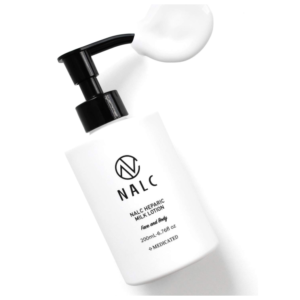目次
From 1996 to 2002, Purdue provided funding for more than 20,000 educational campaigns promoting the use of opioids for chronic pain in patients without cancer (a group for which opioids were generally not indicated). In 1997, the American Academy of Pain Medicine and American Pain Society issued a joint consensus statement promoting the benefits of using opioids for chronic pain management (Haddox et al., 1997; National Academies of Sciences, Engineering, and Medicine [NASEM], 2017). These and other pain advocacy groups (many of which, as noted, were funded by Purdue and other pharmaceutical companies) contributed to opioid overprescribing by arguing that pain was the fifth vital sign and too often left untreated or poorly managed. Their representatives visited physicians’ offices and medical conferences and argued that physicians were too insensitive to the effects of pain on quality of life, needed to do a better job of measuring and monitoring patients’ pain, and should prescribe appropriate pain medications (Quinones, 2015).
- The data are also beginning to show changes in the most affected population groups.
- They identified three distinct opioid epidemics (prescription opioids, heroin, and prescription–synthetic opioid mixtures) and one syndemic14 involving multiple opioids and other drugs.
- As an illegal drug, Meth is usually sold as “Crystal” (white rocks or fragments) to be burned and smoked.
- However, these actions take place against a backdrop of industry activities that promote the use of the drug to providers and patients (NASEM, 2017, pp. 364–365).
Using these same data, however, Brown and colleagues (2010) found a graded relationship between ACE score and smoking-attributable lung cancer mortality. Beginning in the late 1990s, the alcohol industry developed and began to heavily market sweetened and flavored alcoholic beverages (FABs)—also known as “alcopops,” flavored malt beverages, and “malternatives” (e.g., wine coolers, hard lemonade, alcoholic spring water)—to attract youth and women (Freudenberg, 2014). Expenditures on advertising across all FAB brands increased from $27.5 million in 2000 to $196.3 million in 2002 (Freudenberg, 2014), substantially increasing youth exposure to and consumption of these brands and products (Mosher, 2012). Members of the early 1980s birth cohort were in their late teens and early 20s during the early 2000s, so this group was beginning to drink regularly when the heaviest marketing of FABs occurred (Mosher, 2012). For a thorough review of contemporary alcohol industry marketing and lobbying practices and their association with increased alcohol consumption and alcohol-related health problems and mortality, see Freudenberg (2014). Pill mills first emerged in the most economically depressed regions of Ohio, Kentucky, West Virginia, and Florida in the late 1990s and then spread across the country (Quinones, 2015).
Texas Alcohol Abuse Statistics
This figure is based on the International Classification of Diseases, 10th Revision (ICD-10) codes for underlying cause of death. However, the FDA bases its approval decision on the data provided by the manufacturer at the time of the NDA [New Drug Application] and does not require that trials of investigational drugs be conducted with particular characteristics. Drug abuse statistics and drug abuse facts are widely available but are thought to understate the problems of drug abuse as drug behaviors have to be reported by the users themselves. Drug abuse statistics are collected in surveys taken in high school and door-to-door in some neighborhoods. While these provide useful estimates, they are not thought to be the complete numbers.
As most hallucinogens have no accepted medical use for treatment in the US, they are illegal. After calling 911, place any unconscious person in the recovery position while you wait for help to arrive. This allows any bodily fluids to drain out of the mouth and nose, reducing the risk of aspiration and asphyxiation.
Alcoholism Treatment Statistics
Louisiana has the nation’s highest rate of under-21 drinkers among its alcohol-related deaths. Alcohol-related deaths in Kansas are slightly more likely to involve males and underage drinkers. Alcohol-related deaths in Idaho are more likely to be older, chronic alcohol vs drugs alcohol users. Most Schedule IV drugs are prescription medications, some of which have been banned by the Food and Drug Administration. Drugs “with a moderate to low potential for physical and psychological dependance” are classified as Schedule III.

Marijuana legalization was assumed to reduce crime rates, and it did so, albeit in some states. However, other states such as Colorado and Washington saw a little-to-no change in violent crime rates. There are many reasons for using marijuana, such as medicinal purposes, or as people often do so, for leisure and relaxing activities.
Georgia Alcohol Abuse Statistics
Rates increased among Black males and females ages 45–54 throughout the 1990s and early 2000s, then declined among Black males and leveled off among Black females during the mid-2000s before again increasing in the 2010s. Rates increased steadily throughout the study period among Black males and females ages 55–64 and then surged in the 2010s. Black males ages 55–64 were the only group to maintain higher drug mortality rates than Whites throughout the entire study period. Among Hispanic males and females ages 25–44, rates remained relatively low and stable until the 2010s, when these groups experienced increases similar to those among the other groups. Rates among Hispanic males ages 45–54 also remained comparatively low and stable until the 2010s, when they increased.
A study has confirmed that drunk drivers have a significantly higher chance of being involved in a car crash than those who consumed marijuana. Ever since introducing new studies about marijuana’s medicinal use, more and more states are emerging to legalize its consumption. In order for alcohol manufacturers and distributors to stay in business, they must sell primarily to heavy, problematic, addicted drinkers. This targeting is no different from drug dealers, who also rely on regular customers for most of their sales. In reality, about 50 percent of Americans don’t drink at all (would you have guessed the number was that high?!). Most of the 50 percent of Americans who do drink consume low to moderate, amounts of alcohol (less than 1 per day).
It has been observed for decades that persons with mental conditions are also more likely than others to have higher rates of physical/medical conditions. This literature has confirmed, for example, higher rates of back and neck pain (Viana et al., 2018), risk of arthritis (Aguilar-Gaxiola et al., 2016), and hypertension (Stein et al., 2014) among those with chronic mental conditions. In a review of mental health surveys from 17 countries, Scott and colleagues (2016) found a variety of chronic physical conditions occurring more commonly among those with mental disorders than in control populations.
- New Jersey has the second-lowest number of alcohol-related deaths per capita (Utah has the lowest).
- Statistics indicate that some demographics and communities face elevated risks of drug abuse and drug disorders.
- However, these studies have been hampered by the inability to examine those trends by decedents’ educational attainment.
- Nevertheless, using graphical approaches (Figs. 1–3) the results for all drugs under study can be quickly compared.
- This category includes dozens of hormones, synthetic hormones, and hormone derivatives.
Counties with high rates of heroin overdoses were more urban, had larger concentrations of professional workers, and were less economically disadvantaged. Peters and colleagues (2020) examined drug overdose rates for specific opioids in 2002–2004, 2008–2012, and 2014–2016. They identified three distinct opioid epidemics (prescription opioids, heroin, and prescription–synthetic opioid mixtures) and one syndemic14 involving multiple opioids and other drugs. They found that counties with prescription-related epidemics had been “left behind” in the economic restructuring that occurred during the 1970s and 1980s. These communities were less populated and more remote, were older and mostly White, had a history of substance use, and were former farm and factory communities that had been in decline for several decades. By contrast, counties with high rates of heroin overdose and those classified as “syndemic” counties tended to be more urban, connected to interstates, more racially diverse, and in general more economically secure.
Statistics On Heroin Addiction And Abuse
Controversy remains between marijuana and memory loss, or learning impairment percentages, as research is yet to produce concrete results. However, it is proven that marijuana increases the risk of memory loss and learning problems later in life. A study involving 320,000 individuals with a long history of alcohol abuse revealed an exciting result. 10% of the polled alcoholics agree they used cannabis, and the majority of this number (55%) was found to have a lesser risk of developing cirrhosis. Methamphetamine, commonly called Meth, is a controlled substance which has a high potential for abuse, overdose, and addiction. As an illegal drug, Meth is usually sold as “Crystal” (white rocks or fragments) to be burned and smoked.
- Nationally, the drug poisoning mortality rate increased from 3.4 to 21.7 deaths per 100,000 population (a 538% increase) between 1990 and 2017 (National Center for Health Statistics [NCHS], 2019b).
- If you or someone you know is struggling with addiction and you need more information about what to do and where to start, contact a treatment provider today.
- Specifically, the results confirm that the risk of cannabis may have been overestimated in the past.
- The most notable differences by metro status occurred for Hispanic females, among whom alcohol-induced mortality was much lower in nonmetros than in other areas in the early 1990s, but higher than in other areas by the end of the period.
- Researchers estimate this number to be a yearly figure, with many students having academic problems and difficulties, such as missing classes or failing at majors.
- For cannabis and nicotine, the discrepancy in the sensitivity analysis can be explained in the chosen endpoints (no dose response data on mortality in humans were identifiable in the literature).

















